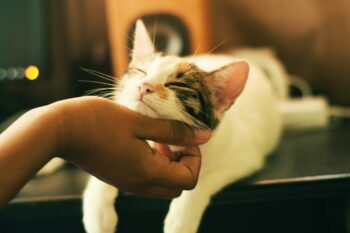Problems involving the gums and teeth are very common in cats. In fact, surveys have shown that as many as 70% of all cats over the age of two suffer from significant dental disease. Far from being harmless or isolated, oral disease can eventually lead to serious systemic problems for your cat.
How can you help your cat’s teeth and gums stay healthy? The American Veterinary Dental Society recommends a full dental cleaning, under anesthesia, every six months. But the most important ingredient of dental health is home care. Consistent attention to your cat’s teeth at home can result in less frequent veterinary cleanings.
Home Dental Care
First, teach your cat to accept daily brushing or wiping of the teeth. Such training should ideally be started at a young age. Using a toothbrush designed for cats (human toothbrushes are too large and stiff), apply the bristles to the teeth at a 45-degree angle to the gums, reaching both the tooth surface and the area just beneath the gum margin. Do not use human toothpaste, which is not formulated to be swallowed. Instead, try specially formulated pet toothpaste, which is flavored appropriately for your cat and is harmless if swallowed. Pet toothpastes contain enzymes that help remove plaque, and do not require rinsing. Alternatively, you can use no toothpaste and simply allow the mechanical action of brushing to remove build-up.
Use small circular motions with the brush, taking care to get the bristles under the gumline. Because plaque does not build up on the inside surfaces of cat teeth (as it does in humans), only the outside surfaces need to be brushed. Alternatively, a gauze pad wrapped around a finger can provide an adequately abrasive surface for wiping teeth; however, wiping is less likely to reach beneath the gum margin, an important area for plaque accumulation. Since the goal of dental home care is to remove plaque before it hardens into calculus, success depends on your ability to brush your cat







